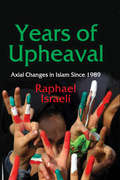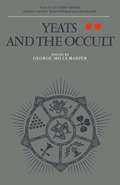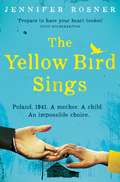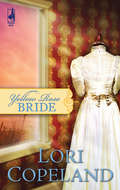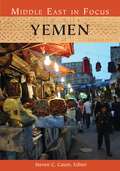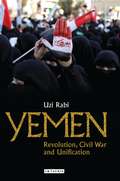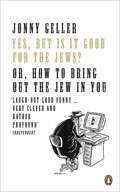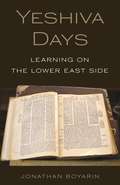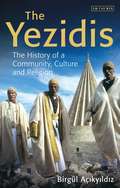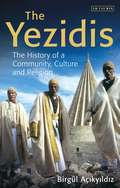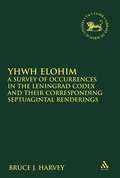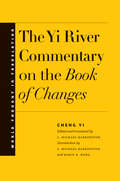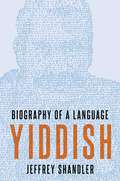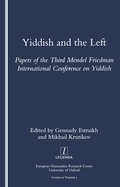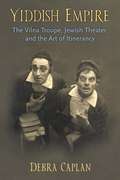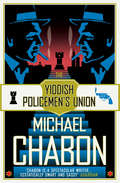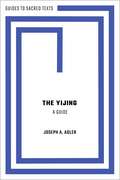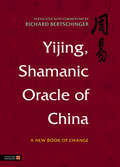- Table View
- List View
Years of Upheaval: Axial Changes in Islam Since 1989
by Raphael IsraeliYears of Upheaval discusses 'Axial periods' in history; years that witnessed such fundamental reversals in history as to make the world turn upside down and inaugurate a new era. Raphael Israeli sees the post-1989 period as such a period in Islam. He explores events in the Islamic world since the end of the 1980s, and during the 1990s and their aftermath, particularly following the Iranian Islamic Revolution, the Rushdie Affair, and the death of Khumeini.Israeli posits these events signalled a new age of Islamic violence and fundamentalism. The period has seen the dissipation of state borders and the rise of transnational and trans-territorial movements, such as ISIS, that have been extraordinarily attractive to young people in the Islamic world. The hopeful Arab Spring (2010-2013) has been replaced by a threatening Islamic winter.A number of major events shook the Muslim world on both the Asian and the African continents as well as peripheral Islamic minorities in Australia, Canada, and Latin America. Among them were the Islamic Bomb and the rise of radical Islamic movements (notably Hamas and Hezbollah) and the rift between Sunnites and Shiites. These and other momentous events in the Islamic world occasioned the 'Arab Spring' and produced unrest in a wide swath of the Muslim world. Even more importantly, these were forming trends that are characterizing the decades thereafter.
The Yellow Bird Sings: A Novel
by Jennifer RosnerPoland, 1941. A mother. A child. An impossible choice.Poland, 1941. After the Jews in their town are rounded up, Róza and her five-year-old daughter, Shira, spend day and night hidden in a farmer's barn. Forbidden from making a sound, only the yellow bird from her mother's stories can sing the melodies Shira composes in her head.Róza does all she can to take care of Shira and shield her from the horrors of the outside world. They play silent games and invent their own sign language. But then the day comes when their haven is no longer safe, and Róza must face an impossible choice: whether the best thing she can do for her daughter is keep her close by her side, or give her the chance to survive by letting her go . . . The Yellow Bird Sings by Jennifer Rosner is a powerfully gripping and deeply moving novel about the unbreakable bond between parent and child and the triumph of humanity and hope in even the darkest circumstances.'If you only read one book this year, make it The Yellow Bird Sings' AJ Pearce, author of Dear Mrs Bird
Yellow Rose Bride (Mills And Boon Steeple Hill Ser.)
by Lori CopelandSeven years ago, seamstress Vonnie Taylor's husband of one day, Adam Baldwin, annulled their marriage. Now she faces the ultimate indignity: sewing his new intended's wedding dress!
Yemen (Middle East in Focus)
by Steven C. CatonYemen is a country that is critical to U.S. security and our political interests, yet most Americans know virtually nothing about it. This book unlocks its secrets and explains its complexities in simple yet compelling language.A nation with a rich civilization that has spanned 3,000 years, Yemen is the only democratic republic in the Arabian Peninsula. While events in modern-day Yemen are often in international news, most Americans know nothing about this country—nor are there easy-to-read, up-to-date resources for lay audiences. This book fills the gap in the literature. It describes Yemen's geography, economy, politics and government, history, culture, society and contemporary events, presenting a comprehensive but accessible overview of the country from many different angles—coverage that is long overdue.Editor Steven C. Caton has taken care to create a resource that is readily comprehensible to non-specialists such as high school and college students and general readers as well as highly informative for those with previous knowledge about Yemen. His thorough treatment provides synthetic overviews of key topics, discusses and dismisses certain misconceptions about Yemen, offers surprising perspectives on the relatively unknown country, and underscores Yemen's importance to the region and the wider world—both in ancient times and today.
Yemen: An Anthropology Of War And Mediation (Middle East in Focus #531)
by Steven C. CatonYemen is a country that is critical to U.S. security and our political interests, yet most Americans know virtually nothing about it. This book unlocks its secrets and explains its complexities in simple yet compelling language.A nation with a rich civilization that has spanned 3,000 years, Yemen is the only democratic republic in the Arabian Peninsula. While events in modern-day Yemen are often in international news, most Americans know nothing about this country—nor are there easy-to-read, up-to-date resources for lay audiences. This book fills the gap in the literature. It describes Yemen's geography, economy, politics and government, history, culture, society and contemporary events, presenting a comprehensive but accessible overview of the country from many different angles—coverage that is long overdue.Editor Steven C. Caton has taken care to create a resource that is readily comprehensible to non-specialists such as high school and college students and general readers as well as highly informative for those with previous knowledge about Yemen. His thorough treatment provides synthetic overviews of key topics, discusses and dismisses certain misconceptions about Yemen, offers surprising perspectives on the relatively unknown country, and underscores Yemen's importance to the region and the wider world—both in ancient times and today.
Yemen: Revolution, Civil War and Unification (Library of Modern Middle East Studies)
by Uzi RabiYemen, tucked into the southwestern corner of the Arabian Peninsula, has often escaped regional and international attention. And yet its history illuminates some of the most important issues at play in the modern Middle East: from Cold War rivalries to the growth of Islamic extremism in the 1990s, and from the rise of 'Al-Qa'ida in the Arabian Peninsula' (AQAP) in the post-9/11 period to Obama-era drone strikes. Uzi Rabi looks at this country and its economic and political history through the prism of state failure. He examines Yemen's trajectory from revolutions and civil war in the 1960s to unification in the 1990s and on to the 2011 uprisings which eventually saw the fall from power of Ali Abdallah Salih in 2012. Covering the twentieth-century history of Yemen from traditional society to a melting-pot of revolutions accompanied by foreign intervention, Uzi Rabi's book offers an analysis of a state that is failing, both in terms of day-to-day functioning, and in terms of offering its citizens a modicum of security. Rabi covers the initial rulers of the country, Imam Yahya and his descendents, who ruled Yemen until 1962. But with the growing influence of Gamal Abd al-Nasser's vision of Arab nationalism, and the defeat the British and their allies in November 1967, the way was paved for the formation of South Yemen: the only declared Marxist regime in the Arab world. Rabi tracks the turbulent political history of the two Yemens, in particular South Yemen, which between 1967 and 1986 saw five presidents come and go, three of whom were ousted by violent means. But with unification came a new set of problems concerning poverty, terrorism and corruption. Rabi's analysis of the political beginnings, rule and eventual downfall of Salih are key to understanding all of these, and how they have contributed to Yemen's current explosive condition. Drawing extensively on Arabic sources, many of which are not available in the English language, Rabi offers important analysis on the volatility of the state in Yemen. Based on freshly examined materials, this book is a vital reference of any examination of the country's twentieth-century history and its impact on the current unstable situation in the wider Middle East.
Yes, But is it Good for the Jews?: How to Bring Out the Jew in You (A\beginner's Guide Ser. #Vol. 1)
by Jonny GellerWhat do google, guilt, musicals and Scarlet Johansson have in common? Answer: they’re all Good for the Jews! But what about Christmas? Or Jordan (the celebrity, naturally)? or Scientology? . Luckily the Judological Institute of Spiritual Mathematics (JISM) are pleased to reveal to the outside world – yes, Non-Jews are allowed to buy this book – the ancient mystical formula for calculating which people, products and places is, in fact, Good for the Jews. Here the secret art of Judology (think of it as a third cousin of Kabbalah) will reveal: • Big Brother is , in fact, Good for the Jews . since when has someone watching your every move, listening to all your conversations, NOT been a Jewish experience? • eBay , of course, is Not . Where else can one happily buy Hitler's nasal trimmer or mint conditioned first editions of Mein Kampf?. Additional help in getting the J factor comes with handy lists of who to marry, which Jews changed their names, and the essential Vacation Spots that are good for the Jews One final note. Please do not borrow this book from a friend or library as borrowing is not Good for the Jews. Buying is. Heimische.
Yeshiva Days: Learning on the Lower East Side
by Jonathan BoyarinAn intimate and moving portrait of daily life in New York's oldest institution of traditional rabbinic learningNew York City's Lower East Side has witnessed a severe decline in its Jewish population in recent decades, yet every morning in the big room of the city's oldest yeshiva, students still gather to study the Talmud beneath the great arched windows facing out onto East Broadway. Yeshiva Days is Jonathan Boyarin's uniquely personal account of the year he spent as both student and observer at Mesivtha Tifereth Jerusalem, and a poignant chronicle of a side of Jewish life that outsiders rarely see.Boyarin explores the yeshiva's relationship with the neighborhood, the city, and Jewish and American culture more broadly, and brings vividly to life its routines, rituals, and rhythms. He describes the compelling and often colorful personalities he encounters each day, and introduces readers to the Rosh Yeshiva, or Rebbi, the moral and intellectual head of the yeshiva. Boyarin reflects on the tantalizing meanings of "study for its own sake" in the intellectually vibrant world of traditional rabbinic learning, and records his fellow students' responses to his negotiation of the daily complexities of yeshiva life while he also conducts anthropological fieldwork.A richly mature work by a writer of uncommon insight, wit, and honesty, Yeshiva Days is the story of a place on the Lower East Side with its own distinctive heritage and character, a meditation on the enduring power of Jewish tradition and learning, and a record of a different way of engaging with time and otherness.
Yeshiva Days: Learning on the Lower East Side
by Jonathan BoyarinAn intimate and moving portrait of daily life in New York's oldest institution of traditional rabbinic learningNew York City's Lower East Side has witnessed a severe decline in its Jewish population in recent decades, yet every morning in the big room of the city's oldest yeshiva, students still gather to study the Talmud beneath the great arched windows facing out onto East Broadway. Yeshiva Days is Jonathan Boyarin's uniquely personal account of the year he spent as both student and observer at Mesivtha Tifereth Jerusalem, and a poignant chronicle of a side of Jewish life that outsiders rarely see.Boyarin explores the yeshiva's relationship with the neighborhood, the city, and Jewish and American culture more broadly, and brings vividly to life its routines, rituals, and rhythms. He describes the compelling and often colorful personalities he encounters each day, and introduces readers to the Rosh Yeshiva, or Rebbi, the moral and intellectual head of the yeshiva. Boyarin reflects on the tantalizing meanings of "study for its own sake" in the intellectually vibrant world of traditional rabbinic learning, and records his fellow students' responses to his negotiation of the daily complexities of yeshiva life while he also conducts anthropological fieldwork.A richly mature work by a writer of uncommon insight, wit, and honesty, Yeshiva Days is the story of a place on the Lower East Side with its own distinctive heritage and character, a meditation on the enduring power of Jewish tradition and learning, and a record of a different way of engaging with time and otherness.
The Yezidis: The History of a Community, Culture and Religion
by Birgül AçikyildizYezidism is a fascinating part of the rich cultural mosaic of the Middle East. The Yezidi faith emerged for the first time in the twelfth century in the Kurdish mountains of northern Iraq. The religion, which has become notorious for its associations with 'devil worship', is in fact an intricate syncretic system of belief, incorporating elements from proto-Indo-European religions, early Iranian faiths like Zoroastrianism and Manichaeism, Sufism and regional paganism like Mithraism. Birgul Acikyildiz here offers a comprehensive appraisal of Yezidi religion, society and culture. Written without presupposing any prior knowledge about Yezidism, and in an accessible and readable style, her book examines Yezidis not only from a religious point of view but as a historical and social phenomenon. She throws light on the origins of Yezidism, and charts its development and changing fortunes - from its beginnings to the present- as part of the general history of the Kurds. Her book is the first to place Yezidism in its complete geographical setting in Northern Iraq, Turkey, Syria and Transcaucasia.The author describes the Yezidi belief system (which considers Tawusi Melek - the 'Peacock Angel' - to be ruler of the earth) and its religious practices and observances, analysing the most important facets of Yezidi religious art and architecture (including funerary monuments and zoomorphic tombstones) and their relationship to their neighbours throughout the Middle East. Acikyildiz also explores the often misunderstood connections between Yezidism and the Satan/Sheitan of Christian and Muslim tradition. Richly illustrated, with accompanying maps, photographs and illustrations, this pioneering book will have strong appeal to all those with an interest in the culture of the Kurds, as well as the wider region.
The Yezidis: The History of a Community, Culture and Religion (Library of Modern Religion)
by Birgül AçikyildizYezidism is a fascinating part of the rich cultural mosaic of the Middle East. The Yezidi faith emerged for the first time in the twelfth century in the Kurdish mountains of northern Iraq. The religion, which has become notorious for its associations with 'devil worship', is in fact an intricate syncretic system of belief, incorporating elements from proto-Indo-European religions, early Iranian faiths like Zoroastrianism and Manichaeism, Sufism and regional paganism like Mithraism. Birgül Açikyildiz here offers a comprehensive appraisal of Yezidi religion, society and culture.Written without presupposing any prior knowledge about Yezidism, and in an accessible and readable style, her book examines Yezidis not only from a religious point of view but as a historical and social phenomenon. She throws light on the origins of Yezidism, and charts its development and changing fortunes - from its beginnings to the present- as part of the general history of the Kurds. Her book is the first to place Yezidism in its complete geographical setting in Northern Iraq, Turkey, Syria and Transcaucasia. The author describes the Yezidi belief system (which considers Tawûsî Melek - the 'Peacock Angel' - to be ruler of the earth) and its religious practices and observances, analysing the most important facets of Yezidi religious art and architecture (including funerary monuments and zoomorphic tombstones) and their relationship to their neighbours throughout the Middle East. Açikyildiz also explores the often misunderstood connections between Yezidism and the Satan/Sheitan of Christian and Muslim tradition.Richly illustrated, with accompanying maps, photographs and illustrations, this pioneering book will have strong appeal to all those with an interest in the culture of the Kurds, as well as the wider region.
YHWH Elohim: A Survey of Occurrences in the Leningrad Codex and their Corresponding Septuagintal Renderings (The Library of Hebrew Bible/Old Testament Studies)
by Bruce J. HarveyThis study provides a survey of all occurrences of YHWH that are followed by an Elohim appositive in the Leningrad Codex and their corresponding Septuagintal renderings. Its primary purpose is to demonstrate how each occurrence of YHWH Elohim, where Elohim is undetermined, could have resulted from changes made to an earlier text. It begins with a discussion of methodological issues. This is followed by a description of the Hebrew context of the 887 occurrences of YHWH Elohim in the Leningrad Codex. In addition to breakdowns according to book, syntactic function and speaker, a summary of corresponding variants in synoptic parallels, the Samaritan Pentateuch, Dead Sea Scrolls and mediaeval manuscripts is also provided. This is followed by a summary of corresponding Septuagintal renderings. These context descriptions provide the foundation for an analysis of the 38 occurrences of YHWH Elohim where Elohim is undetermined. Since four of these occurrences are followed by Sabaoth, a survey of all compound designations containing Sabaoth as well as an analysis of the 18 occurrences of YHWH Elohe Sabaoth are also provided.
The Yi River Commentary on the Book of Changes (World Thought in Translation)
by Cheng YiA translation of a key commentary on perhaps the most broadly influential text of classical China This book is a translation of a key commentary on the Book of Changes, or Yijing (I Ching), perhaps the most broadly influential text of classical China. The Yijing first appeared as a divination text in Zhou-dynasty China (ca. 1045–256 bce) and later became a work of cosmology, philosophy, and political theory as commentators supplied it with new meanings. While many English translations of the Yijing itself exist, none are paired with a historical commentary as thorough and methodical as that written by the Confucian scholar Cheng Yi, who turned the original text into a coherent work of political theory.
Yiddish: Biography of a Language
by Jeffrey ShandlerThe most widely spoken Jewish language on the eve of the Holocaust, Yiddish continues to play a significant role in Jewish life today, from Hasidim for whom it is a language of daily life to avant-garde performers, political activists, and LGBTQ writers turning to Yiddish for inspiration. Yiddish: Biography of a Language presents the story of this centuries-old language, the defining vernacular of Ashkenazi Jews, from its origins to the present. Jeffrey Shandler tells the multifaceted history of Yiddish in the form of a biographical profile, revealing surprising insights through a series of thematic chapters. He addresses key aspects of Yiddish as the language of a diasporic population, whose speakers have always used more than one language. As the vernacular of a marginalized minority, Yiddish has often been held in low regard compared to other languages, and its legitimacy as a language has been questioned. But some devoted Yiddish speakers have championed the language as embodying the essence of Jewish culture and a defining feature of a Jewish national identity. Despite predictions of the demise of Yiddish-dating back well before half of its speakers were murdered during the Holocaust-the language leads a vibrant, evolving life to this day.
Yiddish: Biography of a Language
by Jeffrey ShandlerThe most widely spoken Jewish language on the eve of the Holocaust, Yiddish continues to play a significant role in Jewish life today, from Hasidim for whom it is a language of daily life to avant-garde performers, political activists, and LGBTQ writers turning to Yiddish for inspiration. Yiddish: Biography of a Language presents the story of this centuries-old language, the defining vernacular of Ashkenazi Jews, from its origins to the present. Jeffrey Shandler tells the multifaceted history of Yiddish in the form of a biographical profile, revealing surprising insights through a series of thematic chapters. He addresses key aspects of Yiddish as the language of a diasporic population, whose speakers have always used more than one language. As the vernacular of a marginalized minority, Yiddish has often been held in low regard compared to other languages, and its legitimacy as a language has been questioned. But some devoted Yiddish speakers have championed the language as embodying the essence of Jewish culture and a defining feature of a Jewish national identity. Despite predictions of the demise of Yiddish-dating back well before half of its speakers were murdered during the Holocaust-the language leads a vibrant, evolving life to this day.
Yiddish and the Left: Papers of the Third Mendel Friedman International Conference on Yiddish
by Gennady Estraikh"For over a century Yiddish served as a major vehicle for expressing left-wing ideas and sensitivities. A language without country, an ""ugly jargon"" despised by assimilationist Jewish bourgeoisie and nationalist Zionists alike, it was embraced as genuine folk idiom by Jewish adherents of socialism and communism worldwide. Following the Holocaust, Yiddish was the primary language of education, culture and propaganda for millions of people on five continents. This volume examines the diversity of relationships between Yiddish and the Left, from the attitude of Yiddish writers to apartheid in South Africa to the vicissitudes of the Yiddish communist press in the Soviet Union and the USA."
Yiddish and the Left: Papers of the Third Mendel Friedman International Conference on Yiddish
by Gennady Estraikh"For over a century Yiddish served as a major vehicle for expressing left-wing ideas and sensitivities. A language without country, an ""ugly jargon"" despised by assimilationist Jewish bourgeoisie and nationalist Zionists alike, it was embraced as genuine folk idiom by Jewish adherents of socialism and communism worldwide. Following the Holocaust, Yiddish was the primary language of education, culture and propaganda for millions of people on five continents. This volume examines the diversity of relationships between Yiddish and the Left, from the attitude of Yiddish writers to apartheid in South Africa to the vicissitudes of the Yiddish communist press in the Soviet Union and the USA."
Yiddish Empire: The Vilna Troupe, Jewish Theater, and the Art of Itinerancy
by Debra CaplanYiddish Empire tells the story of how a group of itinerant Jewish performers became the interwar equivalent of a viral sensation, providing a missing chapter in the history of the modern stage. During World War I, a motley group of teenaged amateurs, impoverished war refugees, and out- of- work Russian actors banded together to revolutionize the Yiddish stage. Achieving a most unlikely success through their productions, the Vilna Troupe (1915– 36) would eventually go on to earn the attention of theatergoers around the world. Advancements in modern transportation allowed Yiddish theater artists to reach global audiences, traversing not only cities and districts but also countries and continents. The Vilna Troupe routinely performed in major venues that had never before allowed Jews, let alone Yiddish, upon their stages, and operated across a vast territory, a strategy that enabled them to attract unusually diverse audiences to the Yiddish stage and a precursor to the organizational structures and travel patterns that we see now in contemporary theater. Debra Caplan’s history of the Troupe is rigorously researched, employing primary and secondary sources in multiple languages, and is engagingly written.
The Yiddish Policemen’s Union: A Novel (P. S. Ser.)
by Michael ChabonSet in the Jewish homeland of … Alaska, this is a brilliantly original novel from Michael Chabon, author of THE ADVENTURES OF KAVALIER & CLAY and WONDER BOYS.
Yiddish Theatre: New Approaches (The Littman Library of Jewish Civilization)
by Joel BerkowitzThis volume of essays is the first collection of scholarly studies on the Yiddish theatre to appear in English. Drawing on a variety of academic disciplines, it considers the dramatic and musical repertoire of Yiddish theatre and their historical development, popular and critical reception of productions, and the practice and consequences of state censorship. The time-span covered is broad—from the Middle Ages to the twentieth century—as is the geographical range: Cracow, London, Moscow, New York, St Petersburg, Vienna, and Warsaw. Yiddish Theatre not only presents a comprehensive study of the field but also helps illustrate the significance of the Yiddish theatre as a vital form of expression in the Jewish world. Yiddish drama and theatre has had an enormous capacity to entertain audiences on six continents, while at the same time highlighting social, political, religious, and economic concerns of vital interest to the Jewish people. Yiddish Theatre is a valuable resource for scholars, university students, and general readers interested both in Yiddish theatre specifically and related fields such as Jewish literature and culture, east European history and culture, and European and American theatre. The book contains the most comprehensive bibliography to date of sources relating to the Yiddish theatre.CONTRIBUTORS: Ahuva Belkin, Joel Berkowitz Paola Bertolone, Miroslawa M. Bulat, Brigitte Dalinger, Barbara Henry, John Klier, David Mazower, Leonard Prager, Nahma Sandrow, Nina Warnke, Seth L. Wolitz.
The Yijing: A Guide (Guides to Sacred Texts)
by Joseph A. AdlerDespite its enduring popularity both in China and worldwide, the Yijing is often poorly understood. As a divinatory text, it has a devoted following in the western hemisphere, even as it represents a foundational text of both Confucianism and Daoism. A fascination with the Yijing has been evident among western scholars since the Enlightenment, as well as in notable modern literary and artistic figures. This book provides an introduction for the general reader to this classic sacred text. Joseph A. Adler explains its multi-layered structure, its origins, its history of interpretation from the early first millennium BCE up to the present day, its function of divination, its significance in the history of Chinese thought, and its modern transformations. He explores why the Yijing has been considered the most profound expression of traditional Chinese thought and what meaning it can have for contemporary readers.
The Yijing: A Guide (Guides to Sacred Texts)
by Joseph A. AdlerDespite its enduring popularity both in China and worldwide, the Yijing is often poorly understood. As a divinatory text, it has a devoted following in the western hemisphere, even as it represents a foundational text of both Confucianism and Daoism. A fascination with the Yijing has been evident among western scholars since the Enlightenment, as well as in notable modern literary and artistic figures. This book provides an introduction for the general reader to this classic sacred text. Joseph A. Adler explains its multi-layered structure, its origins, its history of interpretation from the early first millennium BCE up to the present day, its function of divination, its significance in the history of Chinese thought, and its modern transformations. He explores why the Yijing has been considered the most profound expression of traditional Chinese thought and what meaning it can have for contemporary readers.
Yijing, Shamanic Oracle of China: A New Book of Change
by Richard BertschingerFor the Chinese, the destiny of each individual and the cosmos have always been inextricably linked, and for two thousand years the Yijing, or the Book of Change, has exercised the best minds in the Orient. Richard Bertschinger, author of The Secret of Everlasting Life (the first translation of The Can Tong Qi), has worked from the classical commentaries to make a fresh and up-to-date translation for the modern world. Marriage, business ventures, journeys, military ventures, disputes, world affairs, personal problems, health or money issues, all are grist for the mill of the Book of Change. Through pondering the lines, studying their poetry, and devoting ourselves to its meaning, the heart of the ancients is clear. We pick up perhaps in a way we never could have conceived of, how to guide and direct our lives. With an introduction that explains the underlying structure and philosophy of the Book of Change, as well as its history, and a detailed explanation of how to throw the yarrow sticks, or the coins, the novice reader is given everything they need to take their first steps in consulting the ancient oracle, and those already familiar with established translations will find this fresh translation from the original texts clear and illuminating.
Yijing, Shamanic Oracle of China: A New Book of Change (PDF)
by Richard BertschingerFor the Chinese, the destiny of each individual and the cosmos have always been inextricably linked, and for two thousand years the Yijing, or the Book of Change, has exercised the best minds in the Orient. Richard Bertschinger, author of The Secret of Everlasting Life (the first translation of The Can Tong Qi), has worked from the classical commentaries to make a fresh and up-to-date translation for the modern world. Marriage, business ventures, journeys, military ventures, disputes, world affairs, personal problems, health or money issues, all are grist for the mill of the Book of Change. Through pondering the lines, studying their poetry, and devoting ourselves to its meaning, the heart of the ancients is clear. We pick up perhaps in a way we never could have conceived of, how to guide and direct our lives. With an introduction that explains the underlying structure and philosophy of the Book of Change, as well as its history, and a detailed explanation of how to throw the yarrow sticks, or the coins, the novice reader is given everything they need to take their first steps in consulting the ancient oracle, and those already familiar with established translations will find this fresh translation from the original texts clear and illuminating.
